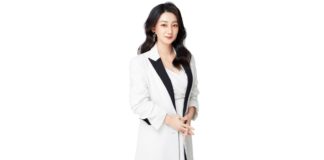ZERO10 AR fashion platform providing innovative solutions for brands
Please introduce yourself and the ZERO10 Startup to our readers!
Hi, I’m George Yashin, co-founder and CEO of ZERO10, an AR fashion platform providing innovative solutions for brands entering the digital world. We’ve been applying our proprietary technology aimed at creating the most realistic AR clothing fitting experience through photo try-on and real-time try-on features.
Previously we partnered with established designers and artists, such as Tommy Cash, Barragan, Maisie Wilen and others. ZERO10 empowers brands to embrace the new virtual world and offer them a sustainable, creative and innovative approach to fashion with digital clothes.
Why did you decide to start a business?
I have more than twelve years of experience in the fashion industry, being the founder of the fashion brand ZNY. With a background in launching successful businesses, I’m always looking for new opportunities to explore. When a new idea you believe in comes up, it is a trigger and a motivator to start a new company.
My partner ― the co-founder of ZERO10 Anton Timashev ― and I believed in the huge potential of this project from the very beginning. We aim to change the fashion industry and contribute to the future. My background in fashion helps me see all the problems in the industry, one of which is the mass production of physical clothing. That’s why we started thinking about avoiding the necessity of making material clothes while keeping their visual aesthetic. People often use clothes as a means of personal expression, and for that, “clothing” doesn’t need to be material.
What is the vision behind ZERO10?
We believe that the future of fashion is hybrid, where physical and digital goods are blended into one united experience. From the start, we offered the brands a way to link the physical and virtual worlds by creating digital items that duplicate their real prototypes. We combine two worlds by developing new experiences that help increase engagement and change the way customers shop.
Our SDK, a set of tools that allows e-commerce platforms to easily add AR try-on to their apps and websites, lets users try on clothes before purchase and match them with an existing wardrobe. Integrating our software into OLED screens, including AR store windows or AR outdoor digital signage, opens up new opportunities to attract users to offline stores ― blurring the line between online shopping and brick-and-mortar retail.
From the idea to its inception, what have been the biggest challenges so far and how did you finance yourself?
The first challenge was to understand if our idea was realistic enough to bring to life. It was crucial for us to develop our own technology because a real-time try-on technology that allows wearing digital items through augmented reality has nothing in common with face tracking, which was in high use back then. Clothing is the most complex and complicated part of the entire AR try-on sector because of the infinite number of human body variations.
Also, it was hard in the beginning to persuade brands to work with us or users to wear digital collections, as back in 2020 the digital fashion industry was in its early stage of development. Now it’s different: companies have opened web3 departments, digital fashion weeks are running alongside traditional ones, and brands like Gucci, Balenciaga and many others have opened stores in the metaverse. Well, despite those original challenges, we went on to do a pre-seed round and raised $2,100,000 from angel investors.
Who is the target group of ZERO10?
At the start we believed that our main target group would be young creatives who are tired of traditional fashion and want to produce content in a more inventive but also more sustainable way. That’s why we started collaborating with established brands to offer users an alternative approach to physical fashion with digital clothing created by their favorite designers. We could see that our target group was not yet ready to fully adopt this idea, as it was and still is very new. It has great potential in the future; just not now.
However, there was a fast-growing interest from fashion brands and retailers who started leaning into exploring emerging technology to grow their businesses, increase operational efficiencies, improve customer engagement, optimize profitability and address the industry’s most pressing challenges. As there were only two companies, including us, offering clothing try-on technology, and with clothing try-on being one of the biggest markets for the AR industry, we couldn’t ignore this opportunity, so we pivoted to B2B.
Aside from our core target of fashion brands and retailers, there are many industries that are linked to clothing somehow, such as gaming, music and others, that could easily become our clients and consumers at the same time. We don’t limit ourselves. If Coachella or Spotify comes to us with the idea to create digital merch available for everybody everywhere to try on through AR, we would be happy to do so!
How does ZERO10 work? What are the advantages? What makes you different from other providers?
We solely focus on clothing which is both our niche and our advantage, but at the same time it’s also a challenge due to the specifics of the human body, compared to face or foot tracking. Our technology is based on three core technologies: 3D Body Tracking, Cloth Simulation and Body Segmentation which allows us to achieve the most realistic real-time try-on experience.
3D body tracking helps us understand the user’s pose and body shape, which are necessary ingredients for a good fit. It’s difficult because we want to make it work in 99% of cases, across all poses and for all body shapes. We also pay a lot of attention to the way the virtual garment looks. One of the core technologies of the ZERO10 Try-On, Cloth Simulation, replicates the natural flow of fabric when interacting with a human body.
Also, one of our other great advantages is that our team has a complex background in different fields ― tech, fashion and product development. This allows us to understand how technology can improve the fashion industry specifically.
Digital fashion won’t replace traditional fashion any time soon, but it will change the way customers shop and how brands and retailers attract consumers. This technology will make commerce more nimble, more sustainable and more engaging to shoppers, whether they’re buying their goods new or used, in stores or online.
ZERO10, where does the road go? Where do you see yourself in five years?
In 5 years I’d like to see how our technologies and products continue to change the future of the fashion industry and help the creative community express itself.
In the end: Which 3 tips would you give to future founders?
Don’t launch a startup to make money. Money will come to you only after you stop thinking about it and start enjoying what you do.
Be ready to hear a hundred “no’s” before you hear the first “yes”.
Don’t think about how not to lose, focus on thinking about how to win.
More information you will find here
Thank you George Yashin for the Interview
Statements of the author and the interviewee do not necessarily represent the editors and the publisher opinion again.
















